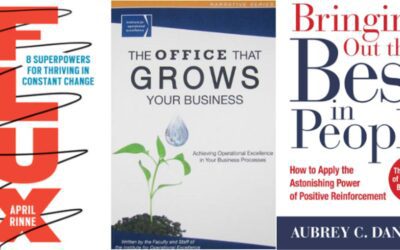From Christmas trees to candy canes, Oregon agriculture plays a big holiday role
This story was originally published in the Oregon Department of Agriculture website. We’ve listed it here for your enjoyment.
The traditional colors, fragrances, and flavors of the holiday season simply wouldn’t be the same if it weren’t for Oregon agriculture. ‘Tis the season to highlight the many ways the state’s $5.4 billion dollar agriculture industry contributes to the festivities this time of year.
“The holiday season is a perfect time to celebrate Oregon agriculture with your family and friends,” says Erick Garman, and Oregon Department of Agriculture trade development manager. “Oregon has such a wide variety of flavors and colors. With more than 220 commodities, it’s no wonder Oregon agriculture plays such a big role during the holidays.”
Many of the icons of the holiday season can be connected to Oregon. Christmas trees, holly, Christmas greenery, poinsettias, reindeer, peppermint candy canes, and even that much appreciated traditional holiday gift of food– the fruitcake– all owe a great deal to Oregon producers, who are working overtime right now in order to supply the market.
Oregon remains number one in the nation in Christmas tree production with nearly 7 million trees sold and a production value of about $104 million in 2014. Oregon Christmas trees are found in homes and offices in virtually all US states and a number of foreign countries. Most of the trees exported from Oregon made their journey across the border in November but some are still on their way this month.
Without Oregon, the holidays would perhaps be a shade of brown instead of green. Holly from both Oregon and Washington dominate the supply of holly found throughout the U.S. and the world. Along with Christmas trees and holly, Christmas greenery is an industry in itself as Oregon-made wreaths, door swags, and garlands find their way into the homes of Americans nationwide. Ask any florist where most of their greenery originated and they will give you the answer– Oregon.
Another popular seasonal plant has roots planted firmly in Oregon. Poinsettia production in Oregon last year grew to more than 549,000 pots with a wholesale value of nearly $2.6 million. The red-leafed holiday plants have been nurtured by greenhouse growers since the summer and are now showing up in high numbers at retail outlets virtually everywhere. Other states grow plenty of poinsettias, but Oregon produces enough to satisfy nearly all of the local demand.
Not only would the holidays not look as good without Oregon, they wouldn’t taste as good either. All those candy canes hanging on trees this time of year probably owe their taste to Oregon peppermint. Oregon tops all states in the production of peppermint oil, producing more than two million pounds of peppermint in 2014. Mint oil is the state’s 16th ranked commodity valued at $51 million last year. Mint production is especially important to the local economy of Union County, which produces more than 20 percent of the state’s peppermint.
There are other holiday tastes provided by Oregon agriculture. In the ingredient area, Oregon is a major producer of all kinds of berries that go into baked items and purees consumed this time of year. Love ‘em or hate ‘em, those holiday fruitcakes owe much to Oregon. A lot of the candied cherries and other fruits that go into the traditional fruitcake are produced in Oregon.
Cranberries from the southern Oregon coast as well as pears from Jackson and Hood River counties are also popular fruits this time of year– either in gift baskets or as ingredients in other holiday foods. The pear is Oregon’s official state fruit.
Of course, the state nut– the hazelnut– is going into nut bowls around the US. Oregon grows nearly 100 percent of the domestic crop of hazelnuts, which are used as ingredients in other products as well.
 Oregon’s dairy industry is also part of the holiday scene. A variety of artisan cheeses– a growing niche product in Oregon– are popular this time of year.
Oregon’s dairy industry is also part of the holiday scene. A variety of artisan cheeses– a growing niche product in Oregon– are popular this time of year.
In the beverage department, Oregon wineries and micro-breweries are producing seasonal offerings that go well as gifts and are often consumed at holiday parties. Several hard ciders crafted from Oregon apples and pears are increasingly popular with the seasonal beverage scene.
Mail order companies based in the state also offer various tastes of Oregon. Big mail order companies such as Harry and David of Medford ship all over the world with products grown and packed in Oregon. Private companies buy jams and jellies, smoked salmon, and other high-end gourmet food products from Oregon and then pack them into their gift baskets. Homemade fudge and chocolates from Oregon are also sold as part of gift packs or as individual Christmas gifts.
The ability to go online to order holiday gifts has spread Oregon’s agricultural cheer and is growing.
There is one more Christmas icon that has an Oregon connection. Where would Santa Claus be without his reindeer? Two miles west of Redmond in central Oregon is the home of what is reportedly one of the largest herd of domesticated reindeer in the country. Known as Operation Santa Claus, this Christmas-theme working reindeer park provides plenty of Blitzen-like animals that actually travel the nation this time of year allowing kids a chance to see the holiday livestock, usually in a shopping mall setting as part of a promotional event.
All in all, there are many ways Oregonians and many others around the US can be reminded of Oregon agriculture between now and New Years.
“Our farmers, ranchers, and fishers are all producing an incredible bounty of food, drink, and other products that really come to life during the holidays,” says Garman. “During the holiday season, take a moment to enjoy Oregon agriculture. You can see its wonderful colors, taste its wonderful flavors, and take in its wonderful aromas.”
Oregon can’t take all the credit, but there is no doubt that the Christmas holiday season would be a bit more brown and bland if not for the agricultural items and food products that originate in the Beaver State.
For more information, contact Erick Garman at (503) 872-6600. For an audio recap of this story, please go to http://wp.me/p52oQB-9r and scroll down.



